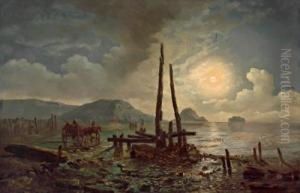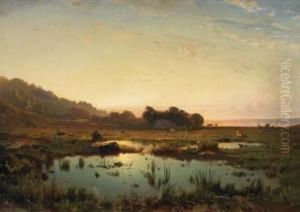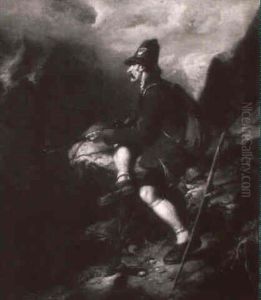Friedrich August Zimmermann Paintings
Friedrich August Zimmermann was a German landscape painter, born in the year 1805 in the city of Berlin. His contributions to the world of art are largely recognized within the realms of landscape painting, where he excelled by capturing the serene beauty of nature. Zimmermann's life and career were deeply influenced by the romantic spirit of his time, which is evident in his picturesque and often idealized portrayals of the natural world.
Zimmermann received his initial artistic training at the Prussian Academy of Arts in Berlin, where he was influenced by the teachings of prominent figures in the German art world. His early work was marked by a keen observation of nature, combined with a refined sense of composition and color. Throughout his career, Zimmermann traveled extensively across Europe, drawing inspiration from various landscapes, from the rugged terrains of the Alps to the pastoral scenes of the Italian countryside. These travels played a crucial role in expanding his artistic horizons and deepening his appreciation for the diversity of natural landscapes.
Despite facing the challenges common to artists of his era, including financial instability and the struggle for recognition, Zimmermann managed to carve out a successful career. His paintings were well-received in art exhibitions and attracted a number of patrons, which allowed him to continue his artistic endeavors. Zimmermann's works are characterized by their detailed rendering of natural elements, atmospheric effects, and a harmonious color palette, which together create a sense of tranquility and timeless beauty.
Friedrich August Zimmermann's legacy is preserved in the collections of several European museums, where his paintings continue to be admired for their technical skill and emotional depth. He passed away in 1876, leaving behind a body of work that continues to inspire and captivate audiences with its celebration of the natural world. Zimmermann's dedication to landscape painting and his ability to evoke the sublime beauty of nature make him a noteworthy figure in the history of German art.










